Be Good to Your Hearts
Barry W. Ramo, MD New Heart Fitness and Health
New Mexico Heart Institute/Lovelace medical group.
Two thousand twenty will go down as a terrible year for heart disease. It will be a while before we can appreciate just how bad it was. Weight gain, prolonged sitting, and unhealthy food choices top the list of coconspirators harming heart health. When cardiac symptoms come, people are ignoring them so more people are dying at home or delaying care, so they fail to receive therapy like a stent and are left with major heart damage. As we learned at the inauguration, we need to turn the page and go to the next chapter that includes the part where we take care of ourselves.
So, make 2021 a time to be good to your heart. The first sentence in that chapter tells you to know your numbers. Only then can you develop a strategy to attack the ones that are harming your heart. Significant heart health numbers are weight, waist size, cholesterol, blood sugar, blood pressure and CRP (a marker of inflammation).
As painful as it is, step on a scale. The quarantine 15 is playing havoc and if you have been running around with loose fitting pants, you might discover putting on your old ones will cut off the blood supply to your brain. Two objective tests for obesity are the body mass index (BMI) or your waist size. The BMI is the ratio between your height and weight. Normal BMI is 19-26, you are obese if you are more than 30. In fact, your waist size is a better predictor of atherosclerotic cardiovascular disease (ASCVD) because where the fat lies are more important for risk. Fat that makes a protuberant abdomen (pot belly) is dangerous whereas generous hips (pear shape) is not a risk to you unless you are a spelunker. Your waist should be less than 40 inches around for men, and less than 35 for women.
Use a scale and a tape measure. Measure your BMI. Body mass index is the relation between your weight and height. See where you fall on a BMI Calculator.
A big belly results from fat in the abdomen that surrounds your organs. This fat causes inflammation and insulin resistance predisposing to diabetes. Central obesity is linked to hypertension, sleep apnea, and diabetes. No amount of crunches will melt away a big belly. Serious weight loss will reduce the risks that central obesity provides.
Three blood tests, a lipid panel, A1c and CRP. The lipid panel reports cholesterol numbers: HDL (H for happy) LDL (L for lousy), and triglycerides. LDL is the target that you attack with diet, exercise and sometimes medication. How LDL cholesterol should be depends on your risk for ASCVD. The American Heart/ American College of Cardiology provide a risk score indicating your 10-year risk for developing ASCVD symptoms or signs such as a heart attack, stroke, or death from cardiovascular disease. If you are under 60, it reports your lifetime risk. The score will help guide you and your doctor on treatment. When the score is intermediate, a coronary artery calcium study that reveals evidence of ASCVD can determine if you need medication to lower LDL cholesterol. Triglycerides are usually dealt with through diet and weight loss.
The A1c measures your average blood sugar during the previous 2-3 months and tells your risk for diabetes or if you already have it. An A1C <5.8 is considered normal, 5.8 to 6.4 is prediabetic, and above 6.5 is diabetic. Prediabetes increases the chance of becoming diabetic. If you are prediabetic, losing about 10% of your body weight can bring you into a normal range.
The CRP number is a marker of inflammation and is increased with central obesity. In recent years, we have learned inflammation is a major factor in ASCVD and reducing it reduces risks.
High blood pressure is a silent killer. You don’t know you have it until you do when you have a stroke or heart attack. Your home blood pressure is a more accurate way to determine if you have high blood pressure. Recording your blood pressure after sitting for 5 minutes in a quiet room is a far better way to both diagnose and treat hypertension. The numbers in your home are better predictors of future ASCVD events. You can get a good one for less than $50.00.
Take a measure of your diet: At New Heart, where I am the medical director, I spend much of my time encouraging our heart disease patients to follow a Mediterranean type of diet. This plant-based diet has been linked to lower risk for ASCVD, hypertension and diabetes. It is very effective approach for weight management.
COVID-19 has meant a huge increase in the time we are sitting. How much are you sitting? It is the new smoking. Sitting time is a risk factor for ASCVD. Numerous reports indicate you derive the greatest cardiovascular benefit from just walking 15-30 minutes a day and not sitting. Buy an inexpensive pedometer and record your steps. Try to get at least 5000 steps and work up if you can. Check our website at New Heart Fitness and Health for online exercises you can do at home using your body weight and bands.
I did not even mention cigarettes. They are the number one cause of heart attacks. If you smoke, quit. Try 1800 Quit now for help.
Let’s make 2021 a year that is good for your heart. Check out your numbers and fix them.
